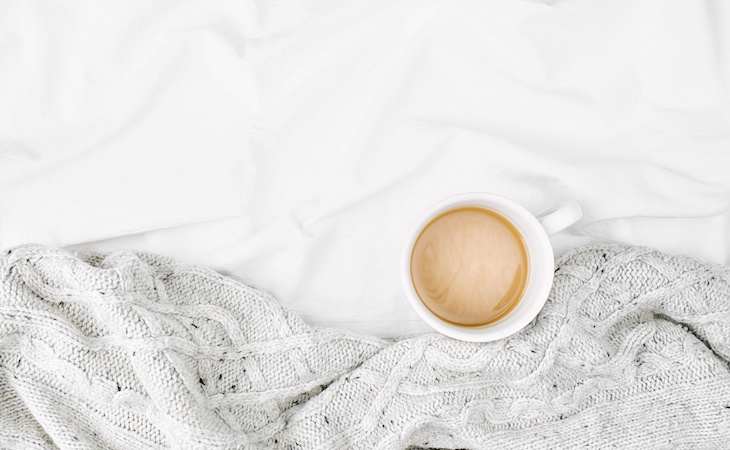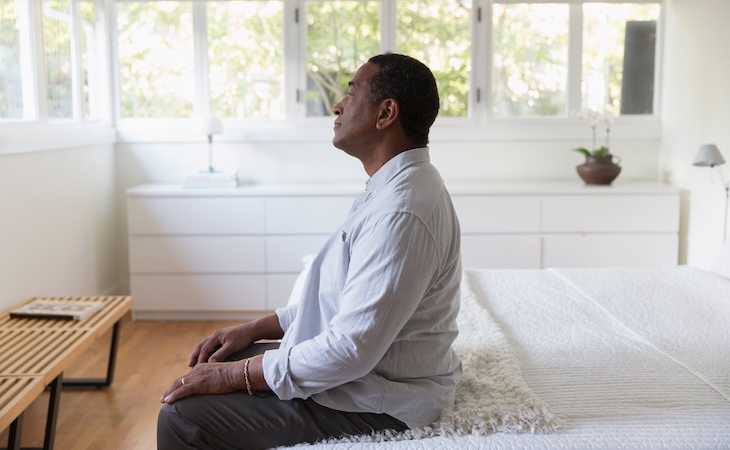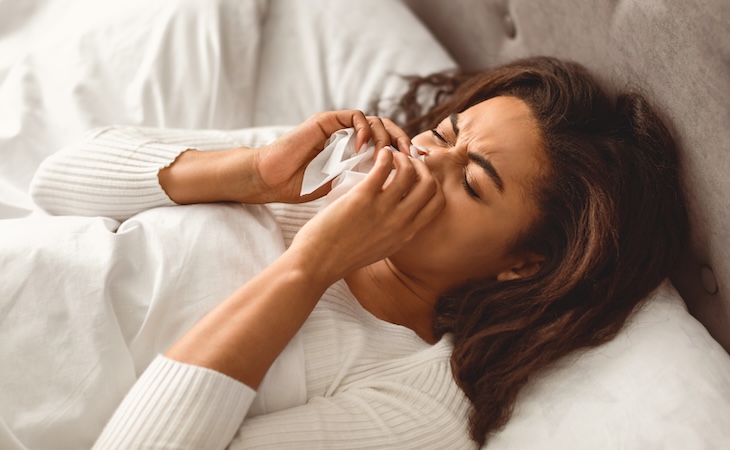I love coffee and naps—so when I heard about “coffee naps,” I had to investigate. You’re familiar with power naps, but what’s a coffee nap? Turns out, It’s not a new trend—and research on coffee naps dates back to the 1990s.
Find yourself yawning and sluggish after lunch? Go ahead and catch some quick Z’s to restore energy, boost your mood, and increase focus and concentration. But why add coffee?
Can downing a shot of java immediately before napping really supercharge your naps? Are coffee naps just a fun trend? Read on to discover what the science has to say.
What is a coffee nap?
“A coffee nap, otherwise known as a ‘caffeine nap,’ refers to drinking a cup of coffee and sleeping,” explains Amanda Liptak, RDN at Nutrient Rich Life. “Timing and sequence matter since the premise is that drinking coffee right before a nap helps you wake up feeling more energized and rested.”
Do coffee naps work?
As the day wears on you may hear people say, “My brain is shot.” Well, there’s something to that. As our energy is depleted, a sleep-inducing neurotransmitter called adenosine builds up in the brain. Caffeine blocks those receptors and wards off tiredness.
Naps flush adenosine from the brain and coffee enhances this effect. Scientists have found that combining coffee with a nap can restore energy levels because more caffeine reaches the brain as adenosine breaks down by sleeping.
“In healthy people with normal adrenal function, coffee naps can be a good way to reboot the day,” says Liptak. “However, if you have a condition such as hypothyroidism (low thyroid function) or adrenal fatigue, coffee naps may not be ideal because hormonal imbalances also impact the body’s circadian rhythm.”
When the natural sleep cycle is off, the body can feel wired when it’s supposed to feel tired and vice versa. Furthermore, coffee decreases appetite and puts your body in a sympathetic state. “In this case, I advise against a coffee nap and recommend hydration and nutrients to balance blood sugar and ultimately manage stress,” Liptak says.
How to take a coffee nap
So, what’s the best way to take a coffee nap?
Well, there’s a catch, cautions Liptak. “It takes approximately 20 minutes for caffeine to kick in,” she says. “If you lie down immediately, and rise in the 20-minute time frame, you’ll reap all of the benefits of caffeine in your coffee.”
Anything longer and you risk trouble waking up and fighting off grogginess triggered by sleep inertia and not being fully awake. Other tips for enjoying coffee naps include:
- Drink the research-backed amount of 200 milligrams of caffeine (12-ounce cup of coffee or two shots of espresso) quickly.
- Find a comfy (cool and dark) place to relax where you won’t be disturbed.
- Set an alarm for 20 minutes.
- If you’re unable to sleep, just relaxing and resting your eyes may still beneficial.
- After napping, return to your daily activities and notice if you feel more alert and refreshed to gauge if your coffee nap was effective.
FAQs
Why does coffee make me nap?
Coffee is a stimulant. In healthy people, it triggers the release of an energy and alertness-boosting chemical called adrenalin. “Adrenalin is time sensitive,” explains Liptak. “And adrenalin surges from caffeine consumption are typically strongest in the first hour.” She notes that as adrenalin levels out, some people experience a “crash-like” feeling causing sleepiness and fatigue—as well as the urge to nap.
How long should a coffee nap be?
Ideally no longer than 20 minutes to avoid falling into the deeper stages of sleep. Remember to take your coffee nap early enough in the day and at least six hours before bedtime or you may have trouble sleeping through the night.
What’s the best time of day for a coffee nap?
“The key to coffee naps is timing,” Liptak says. “Cortisol, the ‘fight or flight’ stress hormone, signals the body that it’s time to get up and be alert. These levels are lower in the afternoon between the hours of 1 p.m. and 3 p.m.
To maximize the effects of a stimulant like caffeine, it’s best to consume when cortisol is naturally lower. “Coffee naps can be beneficial in the morning as well, but it’s best to wait until 10 a.m. because cortisol peaks around 9 a.m.,” Liptak shares. “Pay attention to your normal sleep schedule (and avoid coffee too close to bedtime) so your coffee nap doesn’t interfere.”
Is a coffee nap better than a regular nap?
We’ve covered the science that backs up the positive effects of coffee naps—and another Japanese study revealed that coffee naps boosted memory test scores compared with study participants who didn’t take coffee naps before the tests. Coffee naps may not be for everyone, but it doesn’t hurt to try one.
Want to learn more about the types of tea and what kind of effect they’ll have on your energy levels and sleep? Check out our beginner’s guide to tea.




